#prehistoric mammal
Text
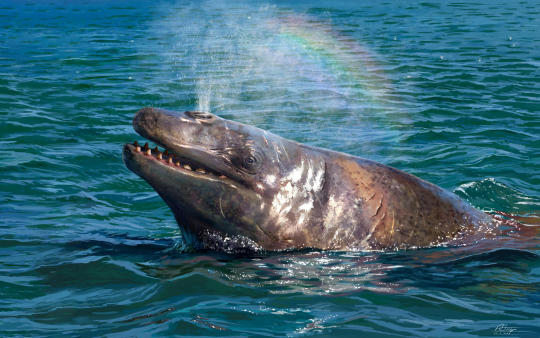
Perucetus colossus by Anthony J. Hutchings.
3K notes
·
View notes
Text
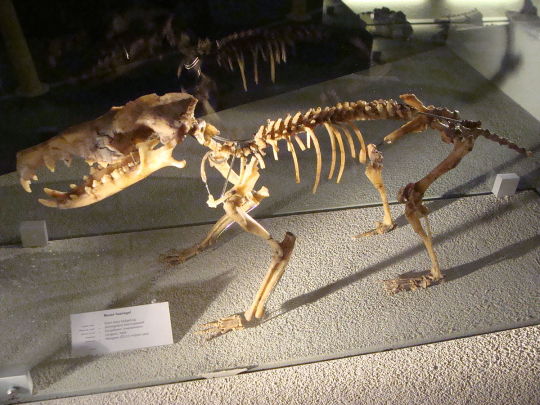

November's Fossil of the Month: Deinogalerix (Deinogalerix spp.)
Family: Hedgehog Family (Erinaceidae)
Time Period: 10-5 Million Years Ago (Late Miocene)
Native to what is now the Gargano region of southeastern Italy (which, as a result of higher sea levels, was an isolated island at the time,) the members of the genus Deinogalerix were relatives of modern hedgehogs comparable in size to small dogs. Lacking defensive spines but possessing long legs and proportionally enormous jaws, it is believed that, in the absence of large carnivores on their home island, the ancestors of this genus' members developed into fast-moving carnivores that may have fed on smaller vertebrates in addition to the invertebrates that make up the bulk of their smaller relatives' diets. The evolutionary phenomenon by which small carnivores isolated on islands gradually become larger, known as insular gigantism, is fairly well documented (being seen in both modern animals such as the Komodo Dragon and numerous extinct species known from fossils found on islands or in areas that were once islands, including a species of eagle-owl sized barn owl, Tyto gigantea, which coexisted with Deinogalerix on what is now Gargano) and is thought to occur in response to a lack of established large predators compared to nearby mainlands. The assumption that Deinogalerix species developed to exploit a lack of competition from similarly-sized predators would also explain their eventual extinction; the Miocene period ended in a major ice age, and as an increase in ocean freezing caused sea levels to fall the island on which Deionogalerix developed would have become more easily accessible from the mainland, possibly allowing for other similarly-sized or larger predators to colonise the former island and outcompete its unique inhabitants - a theory supported by the fact that Tyto gigantea also seems to have gone extinct around this time.
--------------------------------------------------------------------------
Image Sources: https://commons.wikimedia.org/wiki/File:Deinogalerix_koenigswaldi-Naturalis-PeterMaas.JPG
and
https://www.sci.news/paleontology/science-deinogalerix-masinii-new-giant-fossil-hedgehog-italy-01535.html
#Deinogalerix#deinogalerix#hedgehog#hedgehogs#biology#zoology#mammalogy#paleontology#animal#animals#prehistoric animals#wildlife#prehistoric wildlife#prehistoric mammal#prehistoric mammals#fossil#fossils#nature#European wildlife#Italian wildlife
166 notes
·
View notes
Photo

A female australopithecus mourning the loss of her child to a dinofelis attack.
#my art#mammal#ape#prehistoric mammal#Prehistoric Life#Australopithecus#paleontology#paleoart#paleoillustration#Illustration#africa#animal#storm#rain#not#a#dinosaur
841 notes
·
View notes
Text

Purgatorius - by Olorotitan
The illustration for the press-release of the paper:
royalsocietypublishing.org/doi…
#natural history#palaeontology#paleoart#prehistoric life#purgatorius#prehistoric mammal#early primate
59 notes
·
View notes
Text
Time for an update
Time for an update
The front page has had the same illustration since 2017, and I think the site is long past due for an upgrade.
(more…)
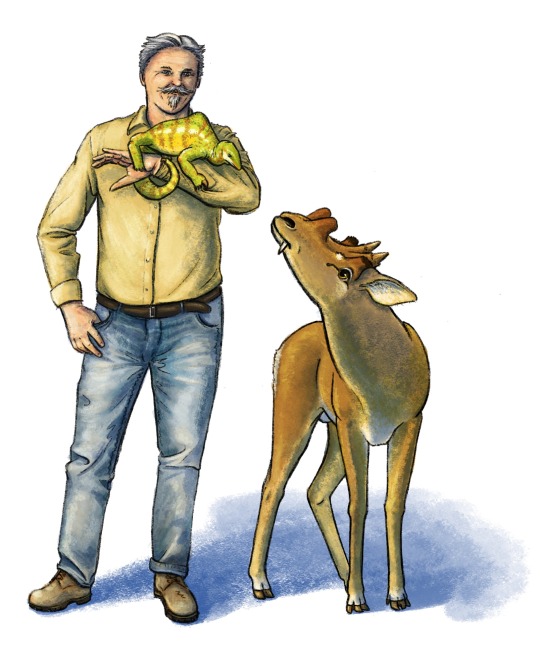
View On WordPress
1 note
·
View note
Text

Sunlemon - LOST ANIMALS
#plush#plushie#plushies#plushblr#plushcore#toycore#soft toy#stuffed animals#sunlemon#lost animals#extinct animals#mammoth#steller's sea cow#dodo#japanese wolf#great auk#plush: prehistoric#plush: pachyderm#marine mammals#plush: bird#plush: wolf#plush: canine
1K notes
·
View notes
Text


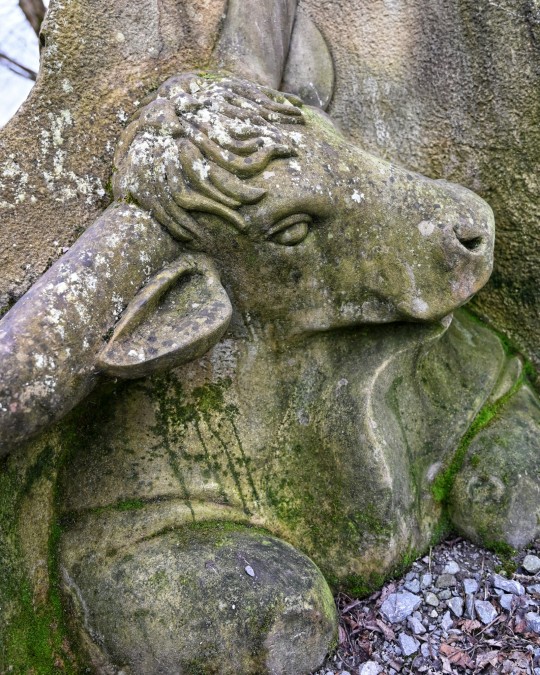

'Aurochs' by Jennifer Tetlow, Dales Countryside Museum, Hawes, Yorkshire Dales
#ice age#stone age#auroch#cattle#prehistoric mammals#mammals#ancient living#ancient culture#ancient farming#farming#archaeology#prehistoric#prehistory#extinct#early farmers#yorkshire
3K notes
·
View notes
Text
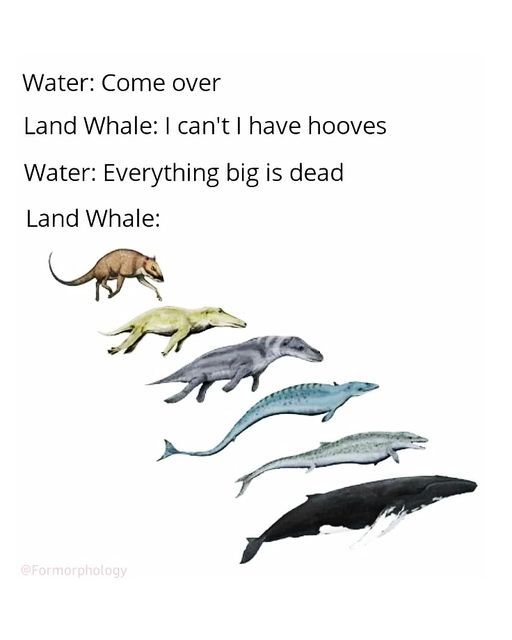
506 notes
·
View notes
Text

Glyptodon
Revisited college animal studies because hopeful improvement 😅
#Glyptodon#prehistoric mammal#armadillo of history#digialillustration#digital sketch#digital art#blind royal guardian
1 note
·
View note
Text
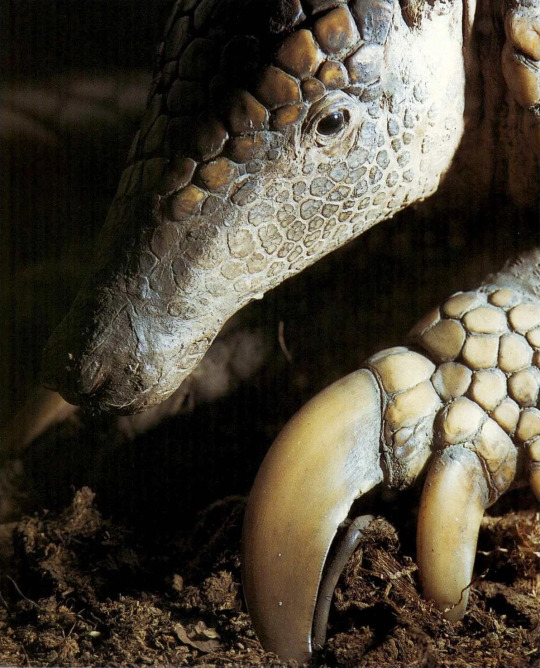
Giant armadillo
By: Unknown photographer
From: Wildlife Fact-File
1990s
#fave#this guy looks straight up prehistoric#giant armadillo#armadillo#xenarthran#mammal#1990s#Wildlife Fact-File
382 notes
·
View notes
Text
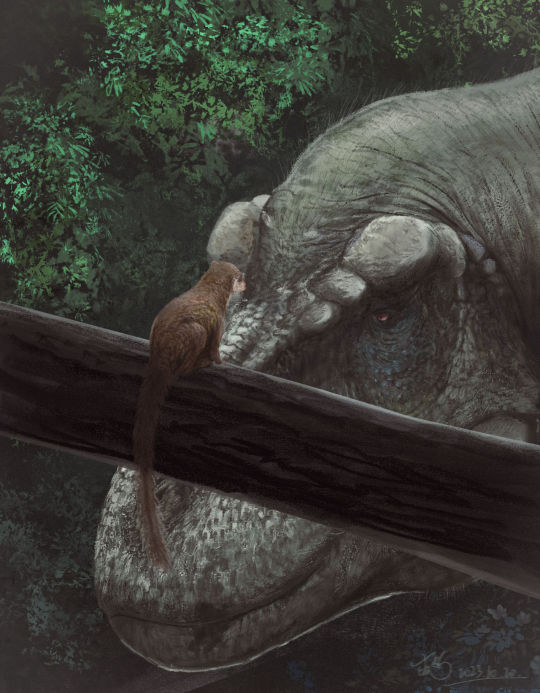
Purgatorius and Tyrannosaurus by Bush Viper 165.
2K notes
·
View notes
Text

#godzilla#godzilla king of the monsters#godzilla island of the monster madness#behemoth#requiem for methuselah#methuselah#rodan#mothra#king ghidorah#monsters#monster island buddies#prehistoric mammals#prehistoric monsters#prehistoric#fire breathing monsters#fire breathing dragon#dragons#dinosaurs#prehistoric dinosaurs#godzilla is king#godzilla posting#godzilla art#godzilla illustration#godzilla drawing
200 notes
·
View notes
Photo
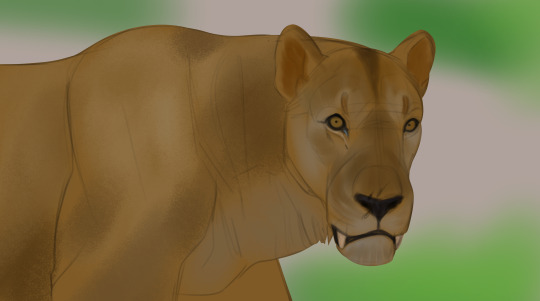
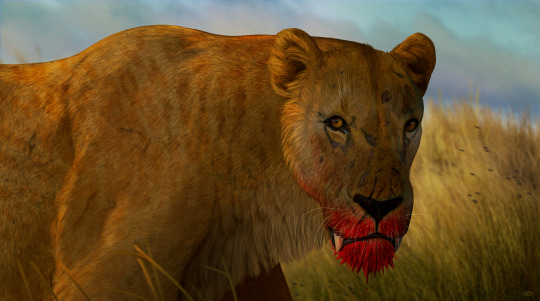
Here is a sketch vs final of my homotherium illustration.
#my art#cat#big cat#sabertooth#homotherium#sketch#prehistoric#prehistoric mammal#paleontology#paleoart#paleoillustration#Illustration#mammal
199 notes
·
View notes
Text

Barylambda - by Gabriel Ugueto
#natural history#prehistoric life#paleoart#prehistoric animals#paleontology#prehistoric#barylambda#prehistoric mammal#prehistoric art#prehistoric planet
6 notes
·
View notes
Text

This whale may be the largest animal ever. We have no idea how it got that big.
A newly discovered extinct whale called P. colossus is challenging the blue whale for the title of heaviest animal to ever exist.
Dubbed by its discoverers Perucetus colossus, or simply P. colossus, the titanic animal may not be just a record setter. P. colossus is also compelling scientists to reconsider their ideas about how animals are able to grow to gigantic sizes.
“This is another way in which you can get big,” said Hans Thewissen, a paleontologist and whale evolution expert at Northeast Ohio Medical University. With a body that looked vaguely like that of a manatee rather than a blue whale’s, it clearly did something different than other whales to maintain its huge mass...
Read more: https://www.washingtonpost.com/climate-environment/2023/08/02/largest-animal-whale-p-colossus
#whale#animal size#biology#zoology#animals#prehistoric#ocean#cetacean#cetacean evolution#evolution#science#nature#mammal#whales#prehistoric whales
810 notes
·
View notes
Text

A remarkably well-preserved fossil discovered in China suggests that millions of years ago, some mammals actively hunted dinosaurs that were several times their size.
The 125-million-year-old bones, uncovered in 2012, consist of a cat-sized creature called Repenomamus robustus, whose skeleton is entangled in a final tussle with a beaked dinosaur known as Psittacosaurus lujiatunensis. The two animals’ fight was immortalized when a nearby volcanic eruption entombed them in a fast-moving wave of ash and mud.
Read more here at Smithsonianmag.com
#dinosaurs#dinosaur#paleontology#prehistoric#fossils#science#prehistoric mammals#Repenomamus robustus#Psittacosaurus lujiatunensis
874 notes
·
View notes